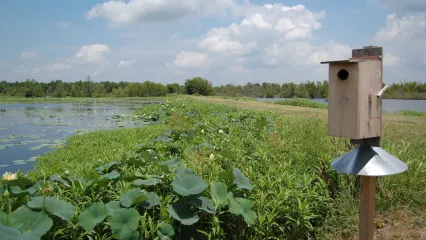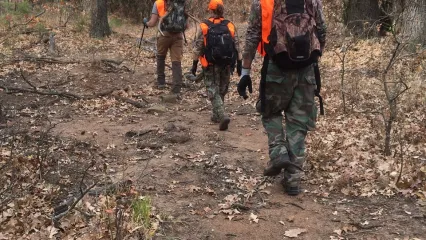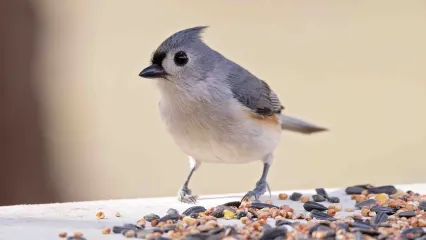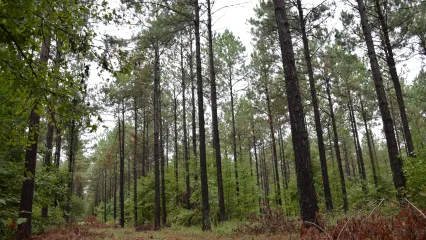Attention Non-Residents
The Oklahoma Wildlife Conservation Commission adopted new rules in 2025 that require non-residents accessing certain Oklahoma public hunting and fishing areas to check in and out of the area. By checking in and out of these areas, hunters, anglers, shooters, birdwatchers, hikers and any other users can help the Wildlife Department better understand how the area is being used. There is no additional cost associated with checking in or out of an area. There is no limit to the number of check ins for an individual in a year.

Red Slough WRP is part of the Red Slough WMA which covers 5,814 acres in McCurtain County in southeast Oklahoma. Located 6 miles south of Haworth, the area consists of consists of about 2,400 acres of wetlands, 1,600 acres of shrub/scrub habitat, 1,100 acres of bottomland hardwood reforestation, 414 acres of reservoirs, and 300 acres of woodlands. In addition Push Creek intersects the entire WMA. It is cooperatively managed by the Oklahoma Department of Wildlife Conservation, U.S. Forest Service, and the Natural Resources Conservation Service.
Habitat consists of reclaimed rice farm fields, bottomland hardwoods, small areas of open prairie, and replanted hardwood areas. The area also has a waterfowl refuge. Non-toxic shot is required for hunting with deer. Archery hunting is allowed. All waterfowl hunting is closed after 1:00 pm local time. The average annual precipitation for the area is 54 inches.
From Idabel: 18 miles south on U.S. Hwy 259, 3 miles east on State Hwy 87, north on Mudline Rd (by the big Getty sign) into area.
- Quail: Bobwhite quail are present in very low numbers.
- Bear: Black bears are present.
- Deer: White-tailed deer are present in fair numbers.
- Turkey: Eastern turkeys are present in low numbers.
- Rabbit: Swamp and Cottontail common.
- Furbearers: Raccoon, beaver, mink, and nutria are a few of the species to be seen.
- Dove: Dove are present in fair numbers during season.
- Waterfowl: Ducks are usually present in good numbers.
- River Otter: Otters are present.
- Bald Eagle: Eagles are frequently seen and golden eagles have also been seen on occasion.
- Nongame Birds: Red Slough is becoming a haven for bird watching with 320 species confirmed.
- American Alligator: This protected reptile has been seen occasionally on Red Slough and area ponds, oxbows and wetlands.
Flooding, discing, prescribed burns, and bush hogging are the tools of management. Native plants and invertebrates provide the majority of forage for game and non-game year round. Management practices include discing between 300-500 acres per year to stimulate native plant growth and to reduce woody vegetation and maintain habitat diversity. Red Slough WMA has plenty of water sources for all game and non-game species.
Camping is not available. There are nine viewing platforms strategically located on the area for wildlife and habitat viewing. Lodging and restaurants are available in Idabel. An additional contact for Red Slough is the U.S. Forest Service 580-494-6402. There are no rifle range facilities on the area. No motorized vehicles are allowed on the area.
Fishing opportunities include Push Creek and in the reservoirs. Bass, catfish, and sunfish are the predominate species.
All shotgun hunting is restricted to federally approved nontoxic shot.
Closed Seasons
Seasons w/ Special Restrictions
- Bear Archery, Deer Archery, Dove, Rail, Gallinule, Quail, Crow, Snipe, Duck, Merganser and Coot, Rabbit, Squirrel, Turkey Fall Archery, Pursuit with Hounds for Furbearers, Predator/Furbearer Calling
Closed from Oct. 15 - Jan. 31.
- Turkey Spring, Youth Turkey Spring
One-tom limit; seasons combined.
Closed to all air-driven watercraft.
U.S. Forest Service
Red Slough
Kiamichi Country Tourism
1-800-722-8180
Broken Bow Chamber of Commerce
1134 W Martin Luther King Jr,
Broken Bow 74728
(580) 584-3393 or (800) 528-7337
bchamber@pine-net.com
www.brokenbowchamber.com
Idabel Chamber of Commerce,
13 North Central, Idabel 74745
(580) 286-3305
Oklahoma Tourism and Recreation Department
Post Office Box 52002
Oklahoma City, OK 73152-2002
(800) 652-6552 or (405) 521-2409
www.travelok.com
Apprentice Designation: A Learner's Permit for Hunting
Hunter education has greatly reduced hunting accidents, but if you can’t complete a course right away, the apprentice designation allows you to hunt under supervision. It works like a learner’s permit, giving you the chance to gain real experience safely until you finish hunter education.
Exploring the New Herron Family WMA
The new Herron Family WMA is more than 17,000 acres of hunting land, it is also adventure, access, conservation, and tradition. Thanks to a unique partnership, Oklahoma residents now have a new place to chase deer, call turkeys, hear quail, and pass on the outdoors to the next generation.


